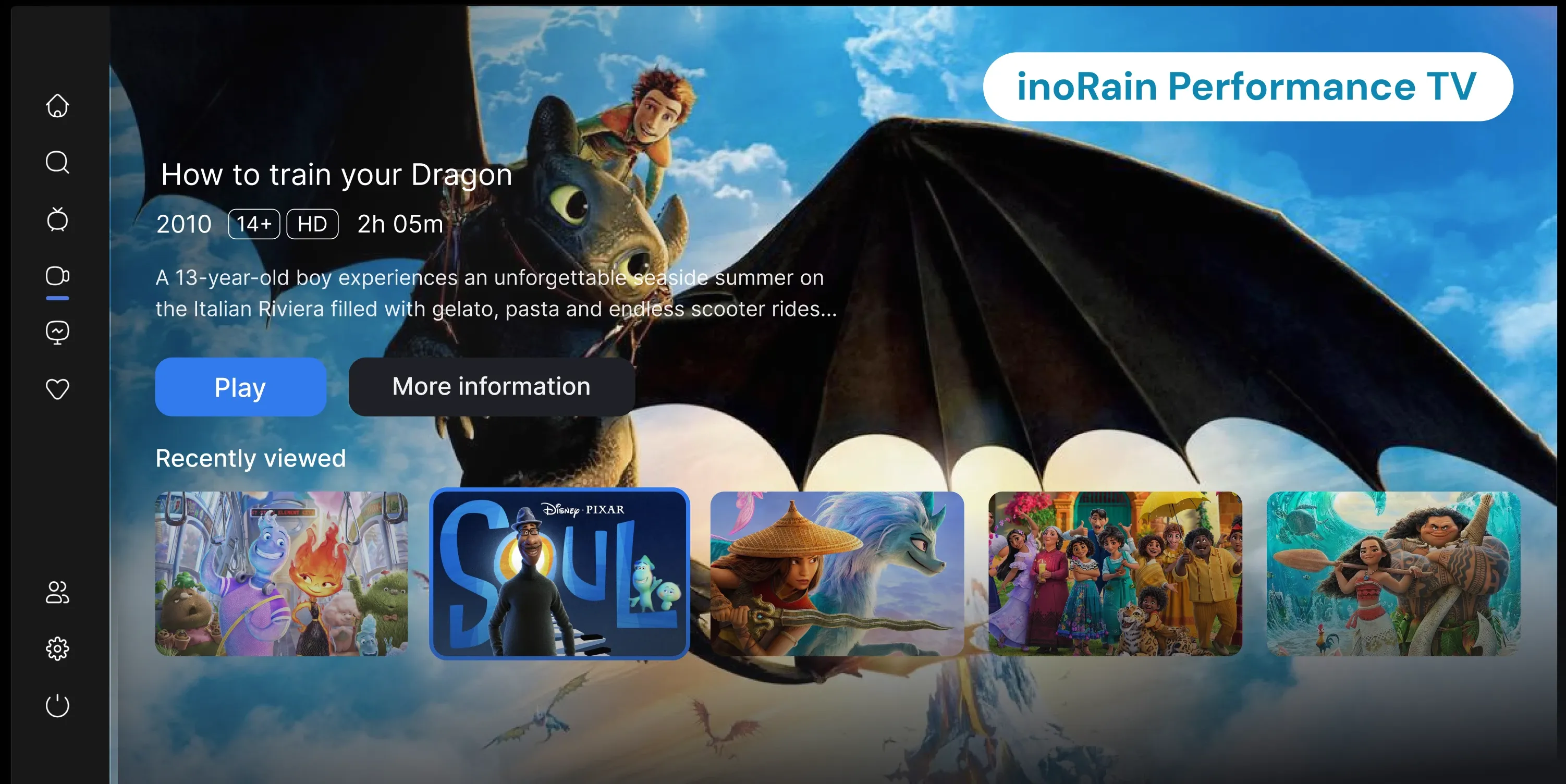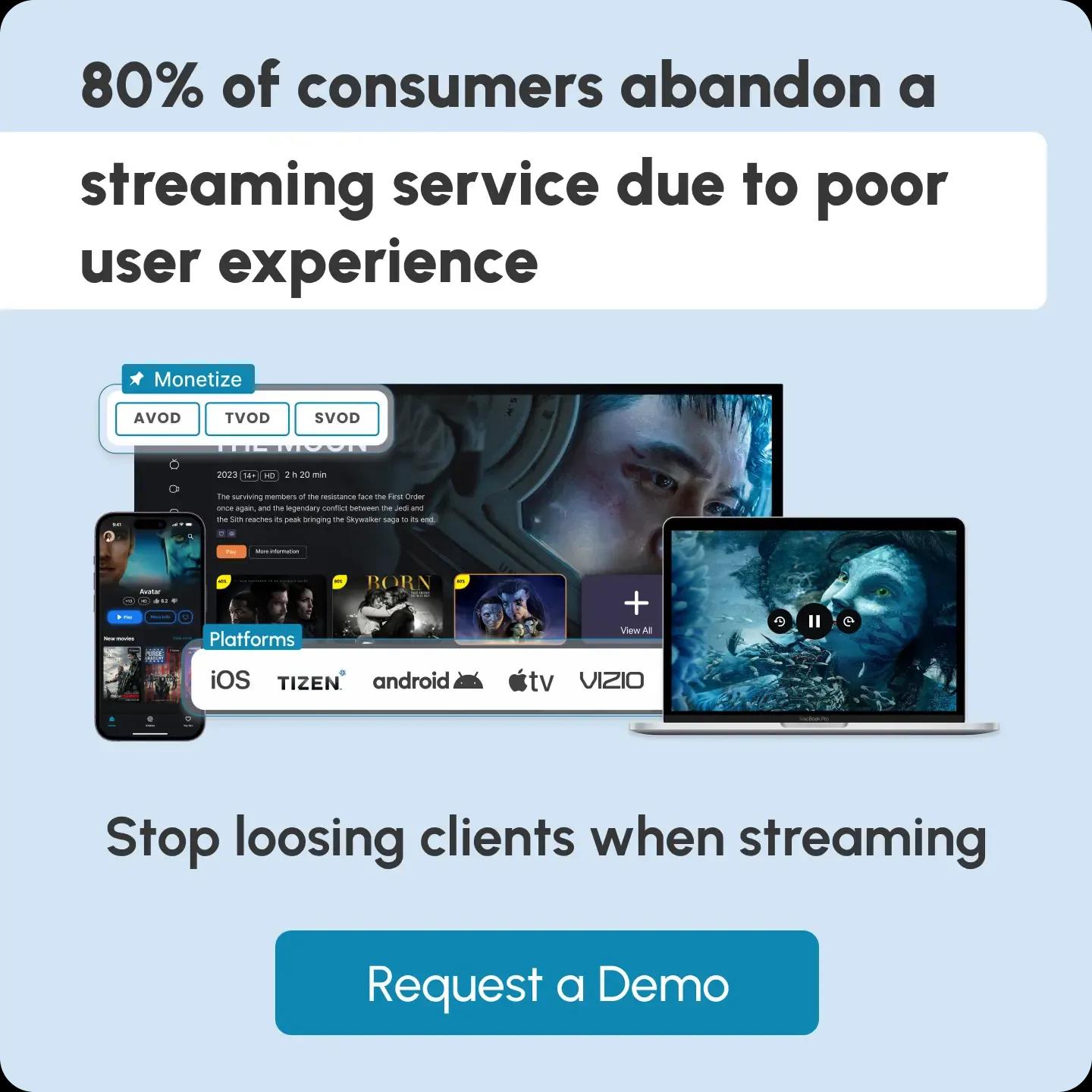
What is Performance TV? Key Components and Benefits
Performance TV combines the power of traditional television with the tools of modern digital advertising. It combines connected TV (CTV) and over-the-top (OTT) platforms to provide advertisers with a means to run targeted, measurable campaigns.
This guide will help you understand Performance TV, the components you need to develop, and the best practices for maximizing its potential.
Understanding Performance TV

Performance TV is a growing advertising strategy that integrates connected TV (CTV) and over-the-top (OTT) platforms to deliver targeted, measurable advertising campaigns.
Traditional TV advertising relies on reach and frequency, but does not provide specific details about the target audience.
Performance TV utilizes digital tools to assess the performance of your campaigns based on key performance indicators (KPIs), such as impressions, click-through rates (CTR), and conversions.
This hybrid approach combines the reach and impact we see from TV with the trackability and precision that digital has become known for. Real-time data helps advertisers modify or optimize their campaigns in real-time, delivering more relevant ads to the audience, with the right devices at the right time.
In fact, Performance TV campaigns can be used to drive specific business goals, such as website visits, leads, or app installs, and become an indispensable part of modern marketing strategies.
Moving From Linear to Connected TV
The first major disruption in TV ad spending occurred with the rise of connected TV and OTT services. Linear TV, on the other hand, refers to the traditional broadcast and cable channels where programming is scheduled and broadcast to viewers at specific times.
Although linear TV has historically been one of the most powerful advertising mediums, its biggest downside is the minimal targeting and measurement that it enables.
CTV and OTT platforms, however, allow viewers to stream content over the internet on smart TVs, gaming consoles, and streaming boxes (ex., Roku, Amazon Fire Stick, and Apple TV). This shift opens up new possibilities for advertisers, as they can gather data on viewership, actions, tastes, and demographics.
Learn more about CTV and OTT here.
Data-Driven TV Advertising
With the increasing adoption of smart TVs and streaming services, advertisers have been able to access data that was previously nearly impossible to collect within the traditional TV landscape.
You can use this data to target specific audience segments by demographics, interests, and even past purchase behaviors. You can also track how many people viewed your ads, for how long, and whether they took an action afterward, such as visiting a website or making a purchase.
Additionally, with the rise of AI and machine learning, predictive modeling can now estimate a campaign's potential success based on historical data.
Attribution and Measurement
In the past, measuring the effectiveness of TV advertising with precision was challenging. Advertisers could monitor overall shifts in sales or brand awareness, but had little knowledge of which specific TV spots caused those shifts. Performance TV was designed to overcome this challenge with precise attribution models.
With advanced attribution, advertisers can see which ads are driving specific actions, from a website visit to an app download to an in-store purchase.
The Integration of Programmatic TV
Programmatic TV advertising is another major advancement in the evolution of Performance TV. It is a method of buying and placing ads instantly through automated systems and data analysis. Programmatic TV enables buyers to purchase television advertising space through automated platforms.
Programmatic TV offers advertisers additional flexibility, enhanced targeting capabilities, and cost efficiency.
Precision Targeting
Performance TV enables businesses to target specific segments of their audience with precision. Traditional TV advertising was largely based on age, gender, or geographic location, which led to wasted dollars on unreachable demographics.
Performance TV’s audience targeting capabilities utilize both first-party and third-party data to reach potential viewers through your specific criteria.
Measurable Results
Traditional TV advertising was one of those “spray and pray” strategies, with marketers hoping their ads would connect with viewers.
Performance TV delivers real-time reporting and extensive analytics on the performance of your campaign. Marketers can monitor KPIs such as impressions, view-through rates (VTR), and return on ad spend (ROAS).
Flexibility and Optimization
Once a campaign was launched on traditional TV, it was already rigid. There was no way to change creative content, targeting, or media placement mid-campaign.
Performance TV, however, gives you the ability to optimize campaigns in real-time based on performance data. So, you can obtain the best possible outcomes through updates to an advertisement's targeting parameters, creative assets, or budget allocation.
Cross-Device Reach
Performance TV isn’t confined to the TV screen. You can target brands across many CTV and OTT devices, including smartphones, tablets, and desktops. This enables you to build integrated, cross-channel campaigns that increase the likelihood of conversions at every touchpoint.
Key Components of Performance TV
Here are the core elements that make Performance TV successful:
1. Data-Driven Targeting
Performance TV is powered by data. Using both first-party and third-party data, advertisers can build detailed audience profiles based on demographics, interests, behaviour, etc. As a result, advertisers can target their ads to their absolute ideal audience with laser precision. Performance TV uses this data to ensure that ads reach viewers who are more likely to engage with the content and become customers.
2. Attribution and Measurement
Another key component of performance TV is the tracking and attribution of conversions. With TV performance tools, advertisers are able to track precisely whether their campaigns are working, which ads are driving those actions, and whether they’re website visits, app downloads, or purchases.
In simpler words, advertisers can measure TV ad performance. TV attribution models provide a direct link to the exact TV ads that drive outcomes, enabling marketers to see campaign effectiveness more clearly than ever before.
Advertisers can use key metrics such as impressions, video completion rate (VCR), click-through rates (CTR), and return on ad spend (ROAS) to make data-driven decisions. Because of its transparency, it can be optimized at any point in time to keep the campaigns aligned with business goals.
3. Programmatic TV Buying
With its ability to facilitate real-time bidding and dynamic ad placement, programmatic advertising automates the buying and placement of ads. Through programmatic TV, advertisers can make instantaneous bids on ad space within connected TV and OTT channels. It is this process that ensures the right message is shown at the right time and to the right person, ultimately leading to greater efficiency and effectiveness.
This strategy is known as programmatic TV buying and also allows for dynamic ad insertion, where ads are swapped based on viewer behavior, time of day, or geographic location. That flexibility allows advertisers to serve tailored, contextually relevant ads that resonate with viewers.
4. Cross-Device Integration
Performance TV is capable of targeting away from the TV screen, which is a huge boost for companies looking to reach their audiences across devices. Many CTV and OTT platforms offer marketers the ability to deliver campaigns that gate-crash users’ digital devices, spanning smartphones, tablets, laptops, and desktops.
Brands that engage with their sustainability message on a digital angle will find that the bridge between social networks and TV is even stronger than ever.
Retargeting campaigns work especially well with cross-device targeting. A viewer who sees an ad on their connected TV, for example, could later see a display ad for the same brand on their mobile device. This multi-touchpoint approach ensures the brand stays top of mind, compelling people to convert over time
5. Creative Flexibility and Personalization
Performance TV also offers more creative freedom. In contrast to conventional TV advertising, where creative assets are often locked in after a TV campaign goes to market, Performance TV allows advertisers to replace creative components in response to real-time performance analysis. If one ad creative isn’t performing well, you can swap in another version to provide better results.
Personalization is another major feature of Performance TV. Advertisers can use viewer data to show targeted ads that are relevant and match the viewer’s interests, location, and even behavior. A detailed level of targeting enables higher engagement rates and contributes to making the advertising experience more relevant and less annoying for the viewer.
5 Benefits of High-Performance TV Streaming
1. Precise Audience Targeting
Most large linear TV ad buys predict viewership using general demographic information, like age and gender, leaving ad spots open to be presented to a large, non-targeted audience.
High-performance TV streaming, on the other hand, provides advertisers with access to advanced targeting options based on specific viewer data. For instance, a fitness brand can reach health-conscious individuals by targeting people who are interested in fitness-related content or have previously downloaded health-related applications through dedicated channels.
2. Better Advertiser Experience
Using viewer behavior and interests for ad personalization leads to higher engagement rates. When ads are personalized, they come across as more relevant than disruptive. Brands serve relevant content that matches the viewer’s tastes, resulting in an overall better viewing experience.
3. Cost Advantages and Versatility
High-performance TV streaming offers advertisers a more cost-effective solution than traditional TV advertising, which often requires the purchase of airtime during prime-time slots at high prices.
Connected TV advertising operates on a programmatic basis, which means real-time bidding and budget control are possible, making it easier for brands to refine their campaigns on the fly. This flexibility is critical to small and medium-sized businesses (SMBs), which have limited advertising budgets.
With Performance TV, advertisers can start with limited budgets and scale their campaigns as they observe results.
4. Real-Time Optimization and Campaign Adjustments
Real-time campaign optimization is one of the biggest benefits of high-performance TV streaming. This is quite different from traditional TV ads; once they go live, they are not changed․
Performance TV campaigns can constantly be tweaked depending on data and performance metrics.
If a set of creative assets or audience segments is underperforming, advertisers can adjust their strategy, replace creative assets, or use budgets in better-performing segments.
5. Cross-Platform Reach and Reliability
You can run cross-platform campaigns to reach viewers seamlessly across their preferred devices. Brands can provide the same messaging, regardless of whether a viewer is viewing on a smart TV, laptop, or mobile device.
A cross-platform reach is crucial when viewers often switch between devices throughout the day.
High-performance TV streaming delivers the brand through multiple touchpoints and ensures top-of-mind brand awareness.
Best Practices for Optimizing TV Performance
With a few tweaks here and there, TV performance can be optimized to achieve the desired outcomes efficiently. Here are some best practices that can help you get the maximum amount of ROI from your TV campaigns:
Use the Data for Exact Targeting
Segment your audience using both first-party and third-party data, based on demographics, behavior, and interests. The more targeted you can be, the better your chances of getting in front of the right audience. Data on CTV and OTT platforms allow you to target audiences more accurately than ever before compared with traditional TV sources.
Make More Engaging, Customized Content
Customize ad creatives for your target audience preferences. Putting this new face on ads makes them more relevant to the viewer, which translates to engagement. Also, play with various ad formats like shoppable ads or interactive videos to inspire direct engagement and drive conversions.
Use Programmatic TV Buying
Programmatic advertising is used to automate the placement of ads in real time and help optimize bidding, ensuring that you get the most bang for your buck while reaching your ideal audience.
Monitor and Improve Campaigns in Real Time
Track KPIs such as video completion rates (VCR), impressions, and CTR. Use real-time analytics to tweak campaign settings, reallocate budgets, or replace underperforming creatives. The process of Continuous optimization extracts the maximum possible results for your campaigns.
Emphasis on Cross-Device Interactivity
Cross-platform device targeting (smart TVs, mobile phones, tablets) to engage your audience everywhere and provide a seamless multi-channel experience. It strengthens your messaging and enhances conversion opportunities through various touchpoints.
inoRain Enhances Performance TV

inoRain provides next-generation OTT data analytics and precision targeting solutions to Performance TV. We enable advertisers to serve personalized, data-driven features to the right customers at the right time, maximizing engagement and ROI.
With our white-label OTT platform, you can optimize campaigns in real-time, thus maximizing performance and minimizing wasted resources.
Have any questions? Get in touch with our specialists.
Conclusion
Performance TV has access to user data and analytics that enable informed decisions. Its structure allows the creation of successful business strategies, thanks to insights into user behavior and preferences.
Performance TV optimization combines data-driven targeting, creative agility, and seamless integration across platforms.
Even with the transition from linear to connected TV, advertisers will need to utilize the tools of advanced attribution models, programmatic TV buying, and real-time optimization to remain competitive.
Frequently Asked Questions
Co-founder / CTO
Hi, I'm Armen, the CTO and Co-Founder of inoRain OTT, as well as the Co-Founder of HotelSmarters. With 15+ years of background in digital streaming technology, I specialize in OTT strategies and interactive TV solutions, helping businesses maximize their revenue potential. At HotelSmarters, I focus on leveraging tech to transform hotel operations, while at inoRain, I drive innovation in end-to-end OTT solutions. Let’s connect and explore new opportunities!

OTT Advertising: Types, Best Practices, and Strategies
Over-the-top (OTT) advertising has transformed how brands connect with consumers.

VPlayed Alternatives: inoRain vs. VPlayed
Explore inoRain as a VPlayed alternative, comparing features, pricing, and OTT solutions to find the best platform for your streaming needs.

Custom OTT Platform Development: How to Start an OTT Business
This guide will walk you through everything you need to know about the OTT platform development.
